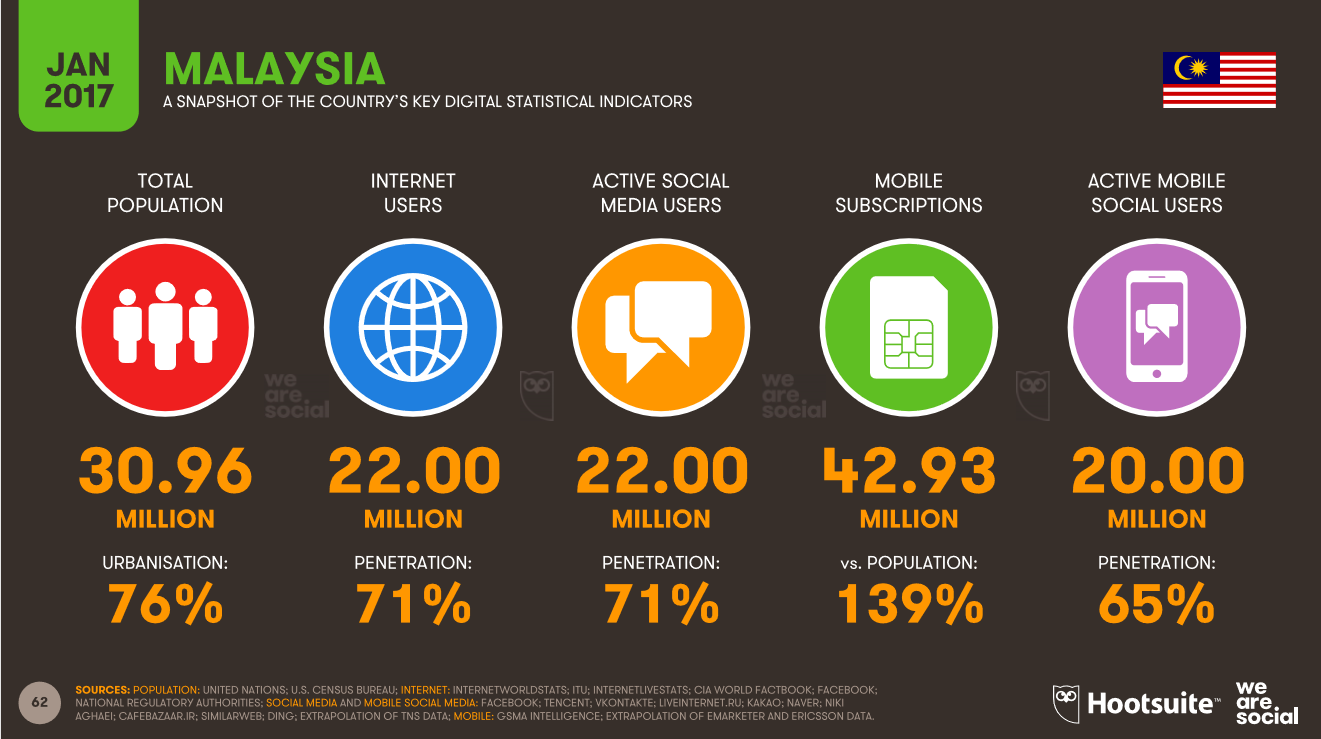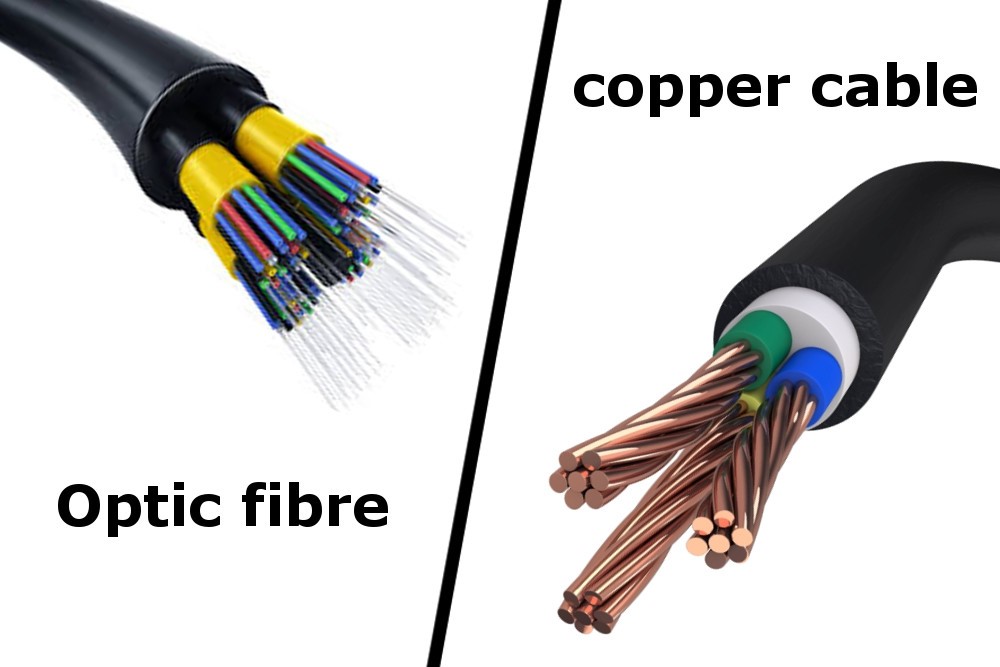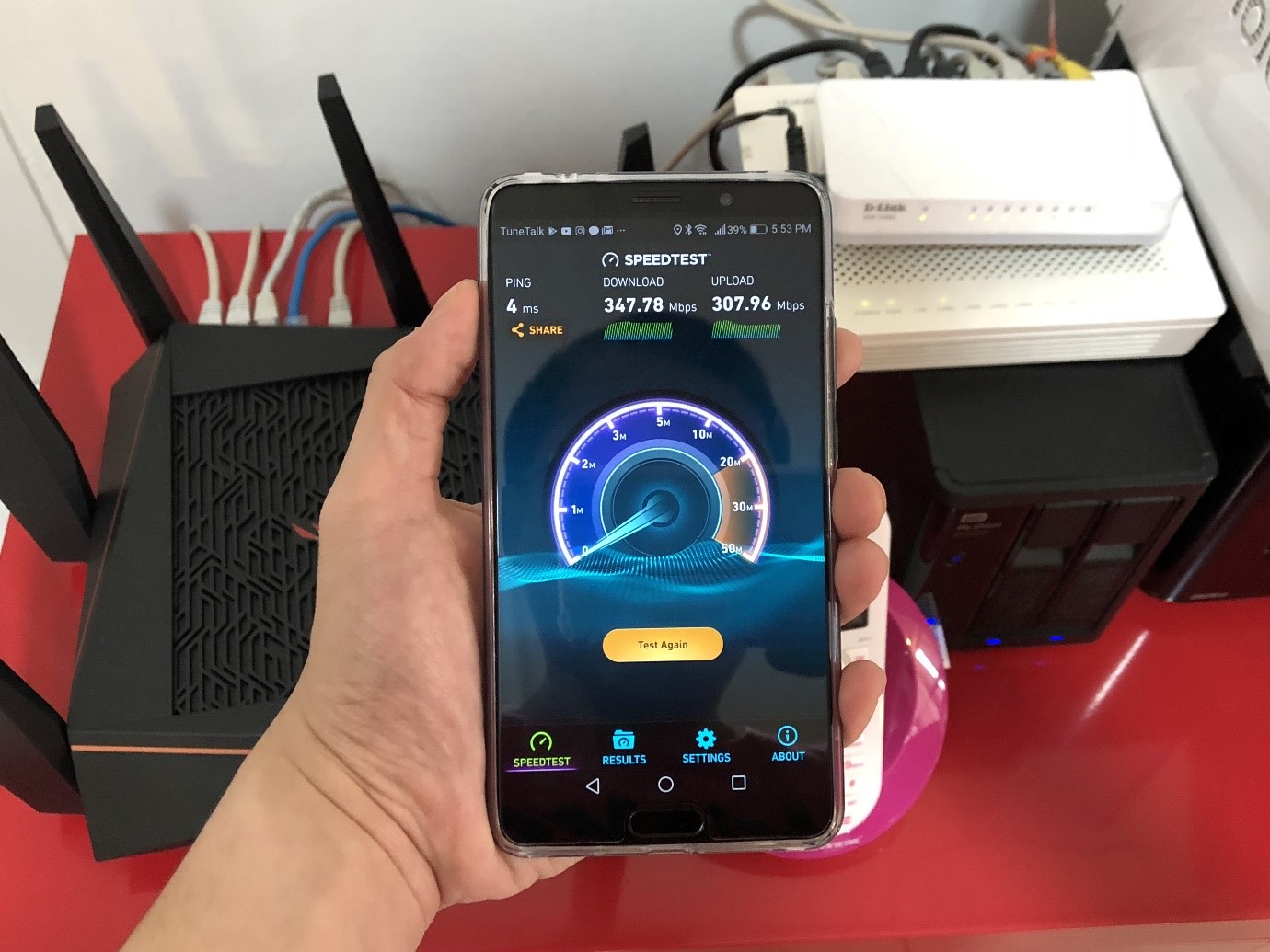[vc_row][vc_column][vc_column_text]Internet in Malaysia has come a long way, we have seen many changes in both fixed and mobile Internet connections from the days of the nostalgic dial up connection. It has also spawned the birth of social media, smartphones and now, we are going to see the Internet power things in our life more than ever before. What does it take to have a fast and reliable Internet service in Malaysia? Let’s dive into some interesting facts before we get there.[/vc_column_text][/vc_column][/vc_row][vc_row][vc_column][vc_column_text]
What are Malaysians doing on the Internet all the time?
[/vc_column_text][vc_column_text]
Based on a study conducted by We Are Social in January 2017, the number of Internet users in Malaysia is a staggering 22 million, which is 71% penetration out of the total 30.96 million population here. That number also translates to the total number of active social media users. In addition, the average time that we access the Internet via a PC or tablet is also a staggering 8 hours and 31 minutes, that’s almost half of our day gone.
[/vc_column_text][vc_column_text]
Even though we now have fixed broadband speeds of up to 500Mbps, the average speed in Malaysia is still a paltry 8.9Mbps according to Akamai’s Q1 State of the Internet Connectivity (SOTI) Report, placing us in the global rank of No. 62. As for Internet usage here, YouTube happens to be the most accessed service followed by Facebook, while 33% of Malaysian Internet users watch online videos daily, now you see why data and speed is more important than ever.[/vc_column_text][/vc_column][/vc_row][vc_row][vc_column][vc_column_text]
What does it take to have high speed Internet?
[/vc_column_text][/vc_column][/vc_row][vc_row][vc_column width=”1/2″][vc_column_text]A 100% fibre optic infrastructure is required to enjoy high speed Internet, while most landed properties are already 100% fibre ready, many high-rise buildings aren’t. Even though ISPs may claim that they provide high speed broadband service on a building, the fact is that some buildings are still not 100% fibre optic infrastructure, and it is one of the main reasons that you aren’t able to subscribe to higher Internet speeds.[/vc_column_text][vc_column_text] For instance, Building A (100% fibre) can get up to 500Mbps of speed, however Building B (copper) will still have to live with a 50Mbps connection, users in Building B could also face more service interruptions when the service gets congested. Which is why, it takes a 100% Fibre infrastructure to offer a great high-speed Internet connection.[/vc_column_text][/vc_column][vc_column width=”1/2″][vc_column_text]
For instance, Building A (100% fibre) can get up to 500Mbps of speed, however Building B (copper) will still have to live with a 50Mbps connection, users in Building B could also face more service interruptions when the service gets congested. Which is why, it takes a 100% Fibre infrastructure to offer a great high-speed Internet connection.[/vc_column_text][/vc_column][vc_column width=”1/2″][vc_column_text]
Fibre optic cables transmit signals using light and can travel a longer distance with less signal loss
Copper cables transmit signals using electricity but can only travel a limited distance, transmission speed degrades as it gets further
Highest Internet speed offered in mass consumer market is currently 500Mbps, which is 100X faster compared to high speed broadband 7 years ago.
[/vc_column_text][/vc_column][/vc_row][vc_row][vc_column][vc_column_text]
Fibre optic isn’t just fast, it is also more scalable and reliable than copper and not affected by electromagnetic interference, which allows service providers to increase connection speeds and expand their service without much issues. Fibre optic is also cheaper to implement in the long term, but it takes time to implement as copper cables are still widely used across the country.[/vc_column_text][vc_column_text]
Certain Internet service providers in Malaysia offer asymmetrical bandwidth, which in most cases you are getting faster download speeds and slower upload speeds. This is a preventive measure done by ISPs to ensure their networks aren’t easily congested, and it does make sense to prioritize download speeds over upload speeds. However, such implementation has its limitations, especially when you live in a housing area or building that has loads of users using the network, a symmetrical bandwidth guarantees the same download and upload speeds, which ensures your Internet connection quality isn’t affected even if either connection bandwidth is used heavily.[/vc_column_text][/vc_column][/vc_row][vc_row][vc_column][vc_column_text]
Which ISP provides 100% Fibre Optic and Symmetrical Speeds?
[/vc_column_text][vc_column_text]
TIME Internet provides a 100% fibre infrastructure with symmetrical speeds of up to 500Mbps for homes, they also cost a lot lesser than competing ISPs and have a more robust and faster infrastructure. TIME Internet home plans start from RM149/month, you get to choose between 100Mbps, 300Mbps and 500Mbps packages, and all plans come with a dual-band wireless router that complies with the latest 802.11 ac WiFi standard.
 For a limited time until 15 December, users who sign up for TIME Internet will get up to RM500 off and stand a chance to win a TV, a winner is picked daily and if you want to be the lucky one, head on over to www.time.com.my/onebigdeal to find out more.[/vc_column_text][/vc_column][/vc_row]
For a limited time until 15 December, users who sign up for TIME Internet will get up to RM500 off and stand a chance to win a TV, a winner is picked daily and if you want to be the lucky one, head on over to www.time.com.my/onebigdeal to find out more.[/vc_column_text][/vc_column][/vc_row]




